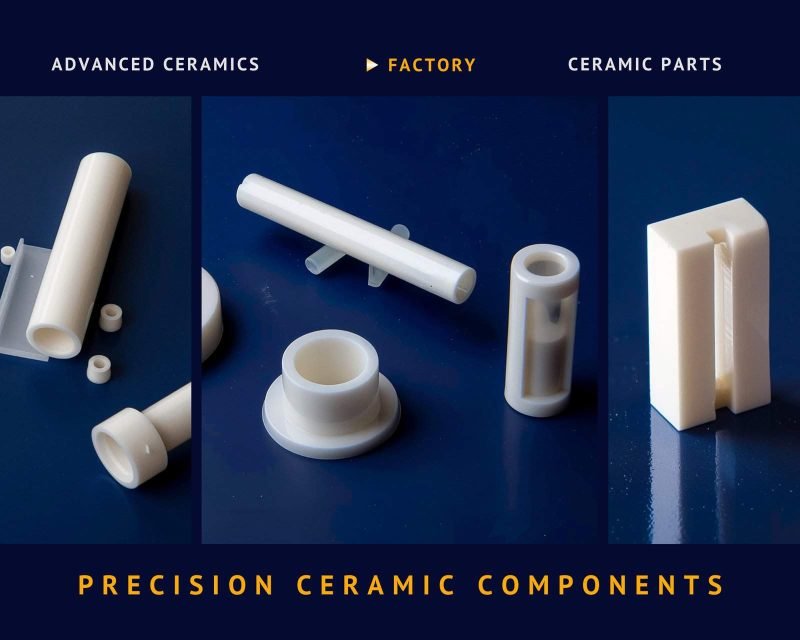Introduction: Advanced ceramics are becoming increasingly important in modern industry, but their origins can be traced back thousands of years. From ancient pottery to modern high-performance materials, this article will explore the evolution of advanced ceramics and their applications in various industries.
Table of Contents
Definition and Importance of Advanced Ceramics
Advanced ceramics, also known as technical ceramics, are materials manufactured using special processes that provide superior mechanical, thermal, electrical, and magnetic properties. These materials are widely used in electronics, aerospace, medical, energy, and other fields due to their outstanding performance.

Origins and Development of Ancient Ceramics
The history of ceramics dates back thousands of years, with the earliest pottery appearing in the Neolithic period. Ancient ceramics were primarily used to make containers and decorative items, with relatively simple manufacturing processes involving clay and high-temperature firing. These early ceramics not only showcased early human craftsmanship but also laid the foundation for modern ceramic technology.
Rise of Modern Advanced Ceramics
With the advancement of technology, ceramic material research has gradually deepened. In the early 20th century, advanced ceramic technology began to emerge, and researchers discovered that by adjusting raw material compositions and manufacturing processes, ceramic properties could be significantly enhanced. Modern advanced ceramics are not only used in traditional construction and art fields but also excel in high-tech industries.
Applications of Advanced Ceramics in Various Industries
Advanced ceramics play a vital role in the electronics industry, being used in the manufacture of capacitors, semiconductors, sensors, and more. These ceramic materials have excellent insulation and thermal stability, allowing them to function reliably in extreme environments.

Aerospace
In the aerospace sector, advanced ceramics are used to make engine components, heat shields, and other parts. The high-temperature stability and wear resistance of these materials make them ideal for spacecraft and aircraft.
Advanced ceramics are increasingly used in the medical field, including in the production of artificial joints, dental implants, bone replacement materials, and medical device components. The biocompatibility and corrosion resistance of ceramic materials make them ideal for medical instruments, such as high-precision surgical knives, minimally invasive surgical tools, and insulating components in MRI machines.


In the automotive industry, advanced ceramics are used to manufacture engine components, exhaust systems, and brake pads. Ceramic materials offer high-temperature stability and wear resistance, significantly improving vehicle performance and lifespan. Additionally, ceramic-based composites in electric vehicle batteries enhance range and safety.
Advanced ceramics have significant applications in the energy sector, including in fuel cells, electrolyzers, and solar cells. Their high-temperature resistance and corrosion resistance are crucial for energy conversion and storage. For example, ceramic materials are used to make efficient fuel cell electrodes and membranes, enhancing energy conversion efficiency.


Industrial Production and Processing
In industrial production and processing, advanced ceramic materials are widely used in cutting tools, molds, and wear-resistant parts. The high hardness and wear resistance of ceramic materials make them excellent in high-precision machining, improving processing efficiency and product quality. Additionally, ceramics are used to manufacture chemical equipment linings and seals, extending equipment life and reducing maintenance costs.
Future Trends and Prospects
As materials science continues to advance, the properties of advanced ceramics will further improve. In the future, advanced ceramics are expected to play roles in even broader fields, such as renewable energy, nanotechnology, and environmental protection. Researchers will continue to explore new ceramic materials and applications, driving technological progress and industrial upgrades.
Conclusion
From ancient times to the present, advanced ceramics have undergone a long evolution. From simple pottery to today’s high-performance materials, they play an increasingly important role in modern industry. With continuous technological advancements, we can expect more breakthroughs and innovations in advanced ceramics, providing robust support for various industries’ development.
If you have any questions or need assistance with how advanced ceramic materials for your applications, please contact us. Our team of experts is ready to help you find the perfect solution to meet your needs. We are committed to providing high-quality advanced ceramic components tailored to your specific requirements. Contact us today to discuss how we can support your projects and enhance your products with the exceptional properties of advanced ceramics.

